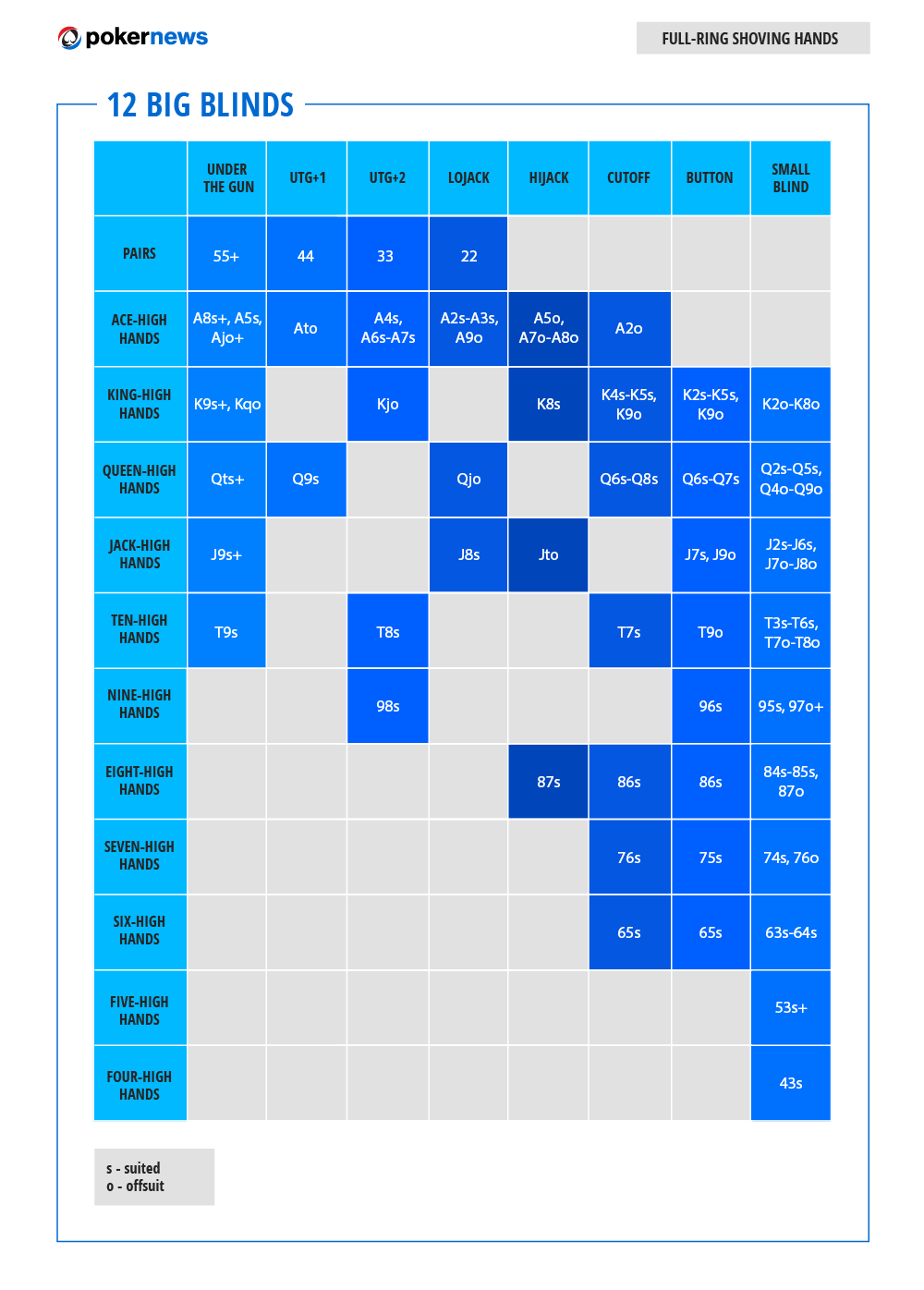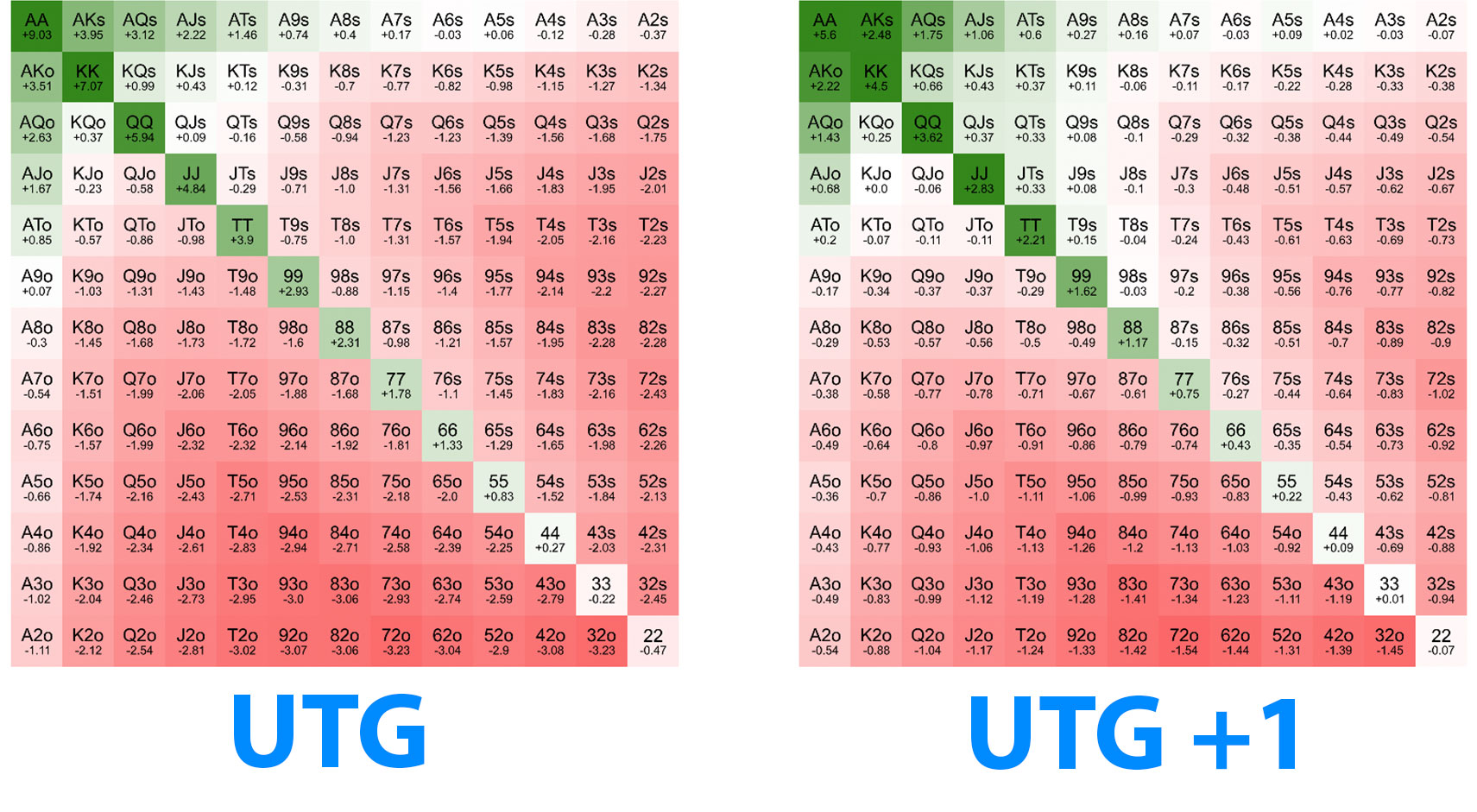Poker Shove Chart
In that case, I would refer to the 10BB chart: If someone in front of you has already raised or shoved in, you should avoid conflict mostly. It takes a much better hand to call a shove than to make a shove. Look at the ten BB chart, you can defend with the three’s and often the two’s. Each chart has three tables; pairs, suited and off-suit which has made it much quicker for me to find my cards on the chart. For the 'Push-Chart when you are first in' chart I have added a field into which I can enter the current big blind and it displays the figures in chips rather than BB multiples. The What: Push/Fold strategy is exactly what it sounds like: Reducing your list of options to either moving all-in or folding your hand before the flop. The Why: When your stack gets below 10 big blinds you can no longer afford to spend chips by limping or raising, only to fold later in the hand. I've heard on multiple videos now the idea of shove charts. I did some googling and found a good amount, but thought I'd check here to see if some TPE members have a particular link that they find to be particularly good for someone who is just learning MTTs after switching over from cash games.
The answer to this is a resounding Yes! We poker players absolutely have a range of hands we should be open-shoving with when short-stacked. In fact, this is one of the few areas of poker that is actually 'solved' by the math geeks of poker. The solution method derives from something called the Nash Equilibrium method.
In game theory, Nash equilibrium is a method of solving so-called 'non-cooperative games' (like poker) that involve two or more players. Nash assumes that each player is playing perfectly; i.e,. everyone knows the strategies and best decisions of the other players, and no player has anything to gain by changing only their own strategy unilaterally. Said another way: Hero and Villain are in Nash equilibrium if Hero is making the best decision he can, taking into account Villain's strategy, and Villain is making the best decision he can, taking into account Hero's strategy.

Poker Shove Charts
Uh, okay. What's this got to do short stack poker? Answer: the math boys have used this method to work out the chip-EV calculations for different hand ranges, given an assumed payout structure of an MTT, for different stack sizes and table sizes. The result of this is something called Push-Fold charts. Google/Bing/Yahoo the term and you'll find lots of information on this approach to short stack play. Or, even better, let Uncle Bug do it for you: Just go to a site like Exceptional Poker to get the charts. For instance, here's a chart for open-shoving when you're at 10 big blinds at a full ring table:If you were in MP with, say four players left to act, and the action folds to you and there are not yet Antes involved, you should be open shoving with: 22+ A7s+ A5s-A3s ATo+ K8s+ KJo+ Q8s+ QJo J8s+ T8s+ 98s. If you have a shorter stack than 10bb, just select the appropriate tab on the web page and go from there. Same with 6-max and heads-up play. (Note that if you have more than 10bb, you should be open-raising to less than all-in.)
Now, are the charts on a site like this perfect for all situations? No, of course not. The charts don't take into account things like individual villain traits and tendencies, and by default they have to assume a specific payout structure that may or may not match the tourney you're playing in (e.g., this particular web site assumes a very top-heavy payout structure). They also assume your opponents are playing perfectly and adjusting accordingly. This is clearly not true...
... but it turns out that this doesn't actually matter much. Most experts agree that if you use correct short-stack push-fold charts like the ones found on Exceptional Poker you will have a significant advantage over ~60% of the players you find at low and mid-stakes online tourneys, and probably a high as 70%+ in your local casino live low-stakes tourneys. Pay attention- this is a really significant edge, folks.
Note that if you're new to push-fold Nash charts, you might think the hand ranges seem pretty wide. Well, yes, they are. But the math don't lie, and countless computer simulations by lots of smart poker/math guys have proven that these charts represent the game theory optimal solution and are correct.

Note also that the Nash ranges assume you're up against opponents who play perfectly. When they make mistakes or don't play optimally, you profit even more by using the charts. Note however that if your opponent's mistakes are significantly large you can make even more profit by deviating your push/fold ranges from the chart. Usually this means tightening up a wee bit. But don't go too far, or